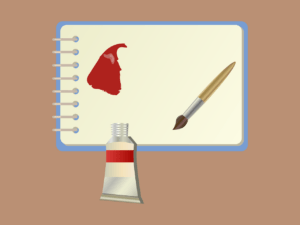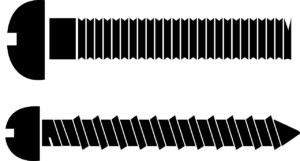How to Choose the Right Print Resolution for Your Marketing Materials

Printing with low resolution can cause photos and graphics to appear grainy and pixelated. To avoid this, ensure your print project is at least 300 PPI. Resolution is measured in ppi (pixels per inch) for images on screens and dpi (dots per inch) for printing. It is important to choose the right print resolution for your marketing materials.
Expected Viewing Distance
The viewing distance of your print is one of the most critical factors in determining how high your print resolution needs to be. While printing method and paper type may affect the PPI count slightly, viewing distance is a major factor in finding the right resolution for your print. Simply put, the farther you are from a print, the less detailed it will look. This is why some prints can get by with lower resolution counts than others, such as posters intended to be viewed from a distance; they can typically be printed at 150DPI without sacrificing quality. However, you’ll want to stay high in resolution; any lower and your print will be very blurry and unattractive. If your print is meant to be up close, you’ll need a higher resolution, such as 300DPI. The choice of print resolution can be complicated; however, finding a print resolution that will give you beautiful results is worth the effort.
Image Size
When selecting images for your marketing materials, you must ensure they are sized correctly. When this is not done, the image may appear pixelated or blurry when printed. To avoid this, you should select images that are 300 PPI or higher. According to Adorama Learning Center, this will ensure that the images are sharp when printed and do not blur. This is because digital images are comprised of pixels, which are tiny squares that are arranged in a grid on a screen. To look sharp, screens typically require lower resolution, such as 72 or 96 ppi. However, when an image is enlarged for printing, it will require a much higher resolution or the highest print resolution to maintain its quality. This is why low-resolution images, such as those used on websites, will always appear pixelated and low-quality when printed.
Image Type
Whether your marketing materials contain images of customers, products, or locations, all images must be at least 300 PPI to print with sharp detail. Many professional printers will automatically scale your image to this size without changing the pixel count and retaining the best quality possible. When printed on paper, the pixel count in digital images translates into dots per inch (DPI). Pixel counts and DPI are inversely proportional; the resolution decreases when you enlarge an image. Higher resolutions mean smaller printed dots, which yield sharper prints. If you’re working with a high-resolution photo or illustration, you can use software like Photoshop or Illustrator to increase the number of pixels in an image. However, upsampling an image will only improve the clarity and may not make it look much better. Most digital photos, illustrations, and logos are saved at a 72-96 low-resolution PPI to be easily transmitted over the web. This is fine for online viewing but is not adequate for printing.
A professional designer can help you choose your project’s file type. They can also recommend a printing service that will provide the best results. For example, if you have a high-resolution file of your company logo, save it as a vector file or EPS to ensure the highest quality for printing on apparel, swag, and brochures.
Image Resolution
The resolution of an image, which translates to the number of pixels per inch (or DPI) on a printing press, determines the final print’s quality. Images that are low resolution look fuzzy, jagged, and blurry when printed. The image resolution is determined by the settings used to capture the source image. For example, a digital monitor typically displays at 72 or 96 DPI. Images that are high resolution have a higher pixel density, allowing them to be printed larger and still maintain their quality. The size of an image or the printing method used to produce it also affects the required print resolution. For example, a high-quality photo printed on an inkjet printer can have a lower resolution than an identical image produced on an offset printing press. The viewing distance also plays a role in determining the optimal print resolution. The farther away people are from the image, the less resolution is required to make it appear clear. While PPI and DPI do have some differences, they are used interchangeably by most print shops. Your print shop will help you determine your project’s correct print resolution. The bottom line is that you should always go with the highest resolution possible to ensure your printed marketing materials are as sharp and crisp as possible.






